Flying with Lithium Batteries What You Need to Know
Flying with lithium batteries has become a common concern for travelers in the modern digital age. Whether it’s your phone, laptop, power bank, drone, or camera gear, chances are you’re carrying at least one device powered by lithium batteries. But air travel introduces a layer of complexity: not all lithium batteries are treated equally under airline safety regulations. In this comprehensive guide, we’ll unpack everything you need to know about flying with lithium batteries safely, legally, and confidently.
- Why Are Lithium Batteries a Concern for Air Travel
- TSA and FAA Guidelines for Lithium Batteries
- Types of Lithium Batteries and Their Restrictions
- Flying with Spare Lithium Batteries
- International Airline Rules on Lithium Batteries
- Best Practices for Packing Lithium Batteries for a Flight
- Flying with Lithium Batteries in Different Devices
- Lithium Batteries and Security Screening
- What to Do If Your Lithium Batteries Are Denied at the Gate
- Traveling with Lithium Batteries Internationally
- FAQs About Flying with Lithium Batteries
Why Are Lithium Batteries a Concern for Air Travel
What Makes Lithium Batteries Different
Lithium batteries are widely used due to their high energy density, lightweight structure, and rechargeability. However, under specific conditions—such as short-circuiting, overheating, or damage—they can pose fire risks. This is why airlines and aviation safety regulators worldwide have established strict rules for flying with lithium batteries.
Incidents and Safety Risks
The primary safety concern when flying with lithium batteries is thermal runaway, a chain reaction where the battery overheats uncontrollably, potentially leading to a fire. In rare cases, incidents involving improperly stored or defective lithium batteries have caused in-flight emergencies, prompting the establishment of international safety guidelines.
TSA and FAA Guidelines for Lithium Batteries
General Rules for Carry-On and Checked Bags
According to the U.S. Transportation Security Administration (TSA) and Federal Aviation Administration (FAA), passengers are allowed to carry lithium batteries under specific conditions:
- In carry-on baggage: Lithium batteries under 100 watt-hours (Wh) are allowed without restriction.
- In checked baggage: Spare lithium batteries are not allowed; only installed batteries (e.g., in laptops) are permitted.
Watt-Hour Limits Explained
Most consumer electronics contain lithium batteries under 100Wh, which includes:
- Smartphones (5–15Wh)
- Laptops (50–90Wh)
- Power banks (10–99Wh)
Batteries between 100Wh and 160Wh (e.g., professional camera or medical devices) may still be permitted but require airline approval.
>>See also Are Lithium Batteries at Risk of Exploding
Types of Lithium Batteries and Their Restrictions
Lithium Ion vs. Lithium Metal Batteries
- Lithium-ion batteries (rechargeable) are commonly found in electronics like phones, tablets, laptops, and cameras.
- Lithium metal batteries (non-rechargeable) are found in devices like watches, hearing aids, and some sensors.
When flying with lithium batteries, both types are subject to regulation, though lithium-ion batteries are more strictly controlled due to their higher energy density.
Devices with Installed Lithium Batteries
You can carry devices with lithium batteries installed (e.g., smartphones, laptops) in both checked and carry-on baggage. However, if the device is checked in, it should be completely turned off to prevent accidental activation or short-circuiting.
Flying with Spare Lithium Batteries
Carry-On Requirements
Spare lithium batteries must be carried in your carry-on luggage, not checked. Each battery should be:
- Individually protected to prevent short circuits (e.g., by placing it in its original retail packaging, or by taping over the terminals)
- Not damaged or defective
- Labeled clearly if it's over 100Wh and approved by the airline
Quantity Limits
For batteries between 100Wh and 160Wh, you are typically allowed to carry no more than two spare batteries per passenger, with prior airline approval.
International Airline Rules on Lithium Batteries
IATA Regulations
The International Air Transport Association (IATA) closely regulates lithium battery air travel. Most airlines align with IATA’s guidance:
- Batteries ≤100Wh: Allowed in carry-on
- Batteries 100–160Wh: Require airline approval
- Batteries >160Wh: Prohibited unless shipped as cargo under special conditions
Airline-Specific Policies
Some airlines have additional restrictions. Always check your airline’s official website or contact customer service before flying with lithium batteries. For example:
- Delta Air Lines prohibits hoverboards with lithium batteries.
- United Airlines does not allow lithium battery-powered smart luggage unless batteries are removable.
Best Practices for Packing Lithium Batteries for a Flight
Use Protective Cases or Bags
Pack spare lithium batteries in battery-safe storage cases or anti-static bags. Avoid loose batteries rolling around in your backpack or suitcase.
Cover Terminals
Use electrical or masking tape to cover the terminals of spare batteries, which prevents accidental contact with metal objects and short-circuiting.
Separate Batteries From Metal Items
Don’t store lithium batteries next to coins, keys, or tools. These can complete a circuit if they come into contact with battery terminals.
Flying with Lithium Batteries in Different Devices
Drones and RC Devices
Drones often use high-capacity lithium polymer (LiPo) batteries. When flying with lithium batteries for drones:
- Carry LiPo-safe bags
- Check Wh rating (most are under 160Wh)
- Confirm airline policy on drone transport
Power Banks and Charging Packs
Power banks are considered spare lithium batteries by the TSA and FAA. Therefore:
- They must go in your carry-on
- You must declare them if over 100Wh
- You cannot use them during takeoff or landing
Electric Scooters and E-Bikes
Devices like e-bikes often use lithium batteries over 160Wh. These are prohibited on most passenger flights and must be shipped separately or left behind.
Lithium Batteries and Security Screening
How Security Staff Handle Lithium Batteries
During TSA or international security checks:
- You may be asked to remove lithium batteries or devices from your bag
- They may swab your batteries or inspect them visually
- Declare batteries over 100Wh in advance to avoid delays
Tips for a Smooth Security Experience
- Keep batteries easily accessible
- Know the specifications (Wh rating)
- Carry printed documentation or labels if unsure
>>See also Best Ways to Store Lithium Batteries Safely
What to Do If Your Lithium Batteries Are Denied at the Gate
Airline Discretion
Gate agents and security staff have the final say. Even if your lithium batteries technically meet the requirements, they may be rejected based on real-time safety concerns.
Options Available
If denied boarding with your lithium batteries:
- You may be allowed to check them (if installed in a device)
- You can ask about shipping them separately
- In worst-case scenarios, you may have to discard them before boarding
Traveling with Lithium Batteries Internationally
Customs Regulations
Customs officials in different countries may treat lithium batteries differently. For example, China and Japan have stricter import rules, especially for larger battery packs.
Voltage and Plug Compatibility
When bringing devices with lithium batteries overseas, also consider voltage and plug compatibility for charging. Use dual-voltage chargers and proper plug adapters.
FAQs About Flying with Lithium Batteries
Can I use my lithium-powered device during the flight?
Yes, but only when permitted by airline crew. Devices must be in airplane mode and stowed during takeoff and landing.
Are lithium batteries allowed in checked bags at all?
Only if they are installed in a device. Spare lithium batteries are not allowed in checked luggage.
What happens if a lithium battery catches fire during a flight?
Cabin crew are trained to handle such events. Devices are submerged in fireproof bags or doused with water to cool the battery
Flying with lithium batteries doesn’t have to be stressful. As long as you understand the size and type of your lithium batteries, pack them properly, and follow TSA and airline-specific guidelines, you’ll have no trouble boarding your flight. From power banks to camera gear, knowing how to safely transport these batteries ensures a smoother travel experience. Whether you're flying domestically or internationally, staying compliant with the rules protects not only your belongings but also everyone on board.
So the next time you pack, remember the key facts about flying with lithium batteries—because a little knowledge goes a long way toward a safe and hassle-free journey.



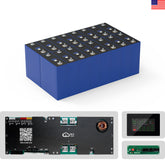

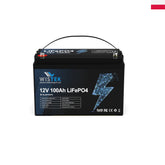
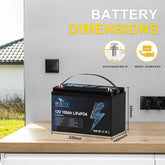
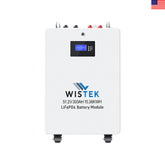
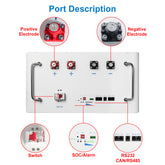
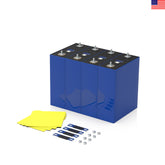
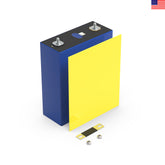
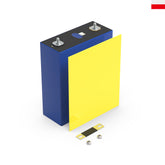

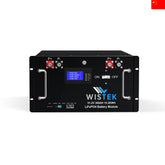
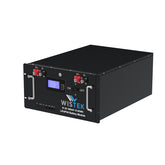
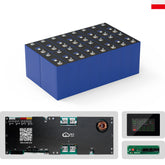








Leave a comment
All blog comments are checked prior to publishing